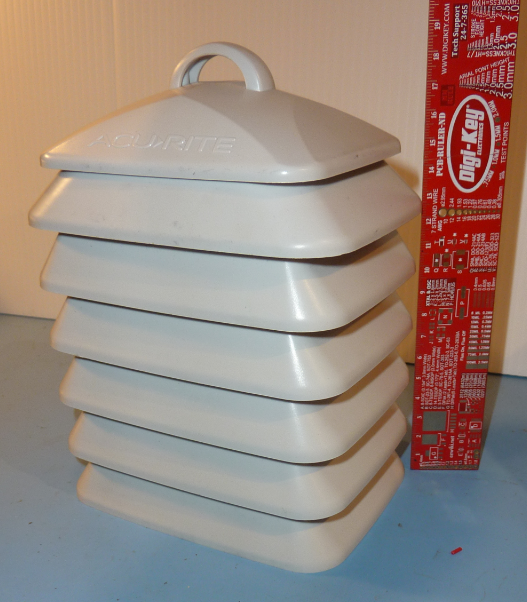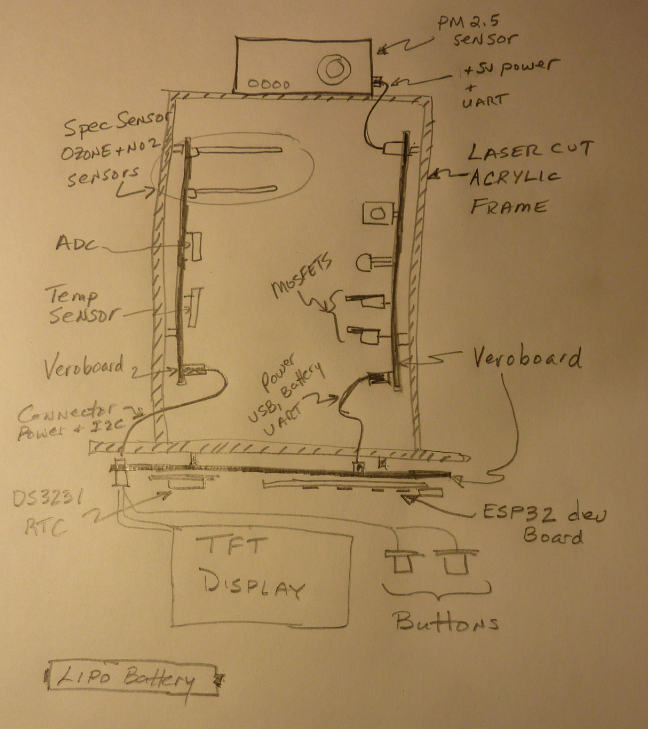It's time to transform the Street Sense breadboard implementation into something more permanent. Over the next month my ambition is to get all of the electronics and sensors into a weatherproof enclosure so I can start some field trials
The selection of the enclosure wasn't difficult. I'm going to house the electronics in the same enclosure used in the SensorUp Smart City Starter Kit. I am a participant in the SensorUp Smart City pilot project and have a one of their beta sensor units mounted on my back porch, measuring PM2.5 particulates, since August 2018. My measurement site is called "Fernwood" in the air quality map of Victoria. This enclosure seems to work well. My only issue was a spider that nested inside the enclosure. The SensorUp enclosure is a commercially available unit, made by AcuRite.


The sensors and electronics will be located inside the enclosure cavity. The dimensions of the cavity are:
Bottom opening: 5cm x 9cm
Depth: 12cm
Packaging Goals:
- Protect electronics and sensors from wind and rain.
- Allow airflow across sensors
- Removal of electronics as a single unit, to facilitate desktop development.
I would like to build some sort of carrier frame, to mount the electronics, that would fit inside the AcuRite enclosure cavity. Here is a paper prototype sketch of the carrier frame for the electronics and sensors.
3 circuit boards are planned, implemented with veroboard:
- Ozone + NO2 sensors, ADC, power conditioning for sensors
- Power conditioning for PM2.5 sensor
- Processing board. ESP32 + RTC
The Lipo battery needs to go somewhere as well. Not sure where it will be located at this time.
The frame will likely be constructed with acrylic, laser cut at Victoria Makerspace, where I am a member. The 3 circuit boards will be attached to the frame with standoffs and bolts. Then the whole assembly will slide into the cavity of the AcuRite enclosure. Some sort of latched attachment mechanism needs to be conceived to securely hold the frame to the AcuRite enclosure - another TBD design topic.

 Mike Teachman
Mike Teachman
Discussions
Become a Hackaday.io Member
Create an account to leave a comment. Already have an account? Log In.